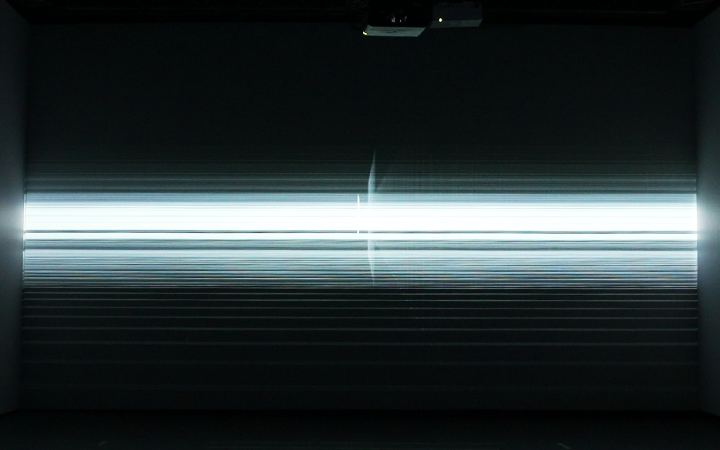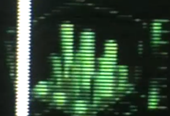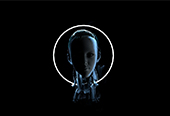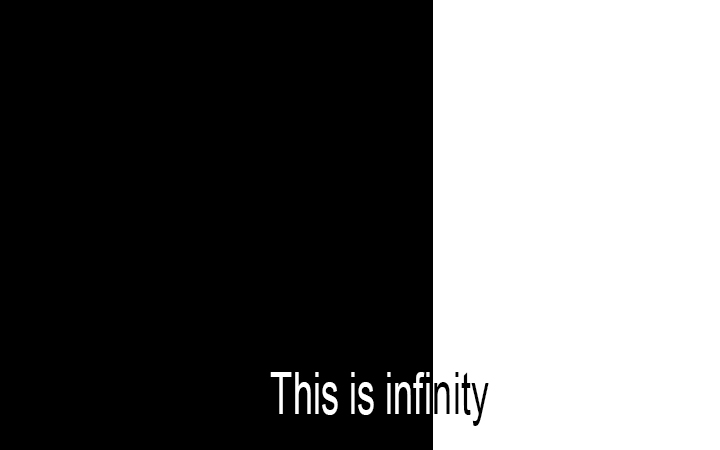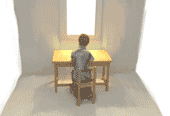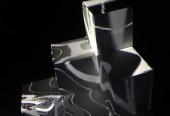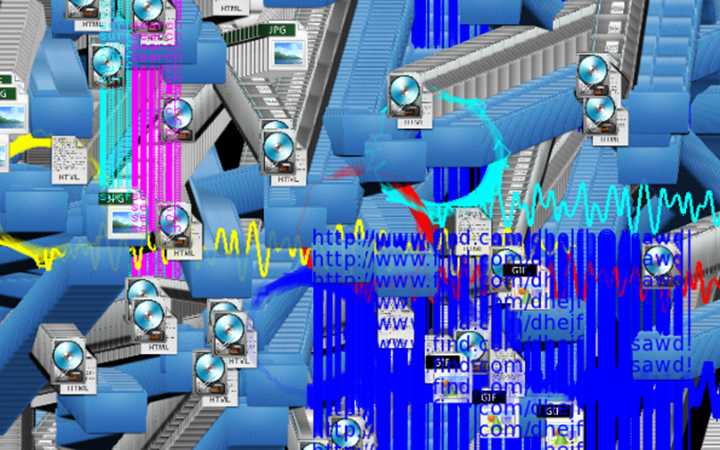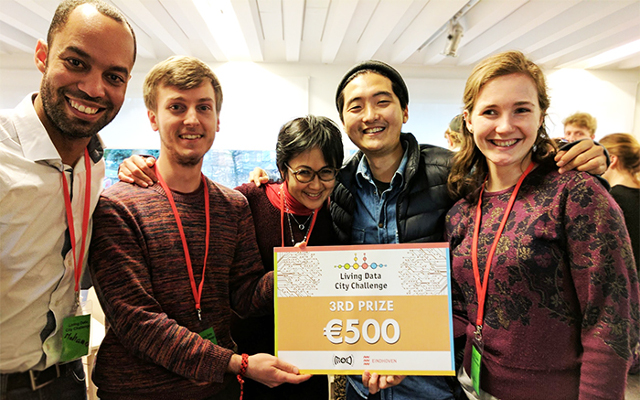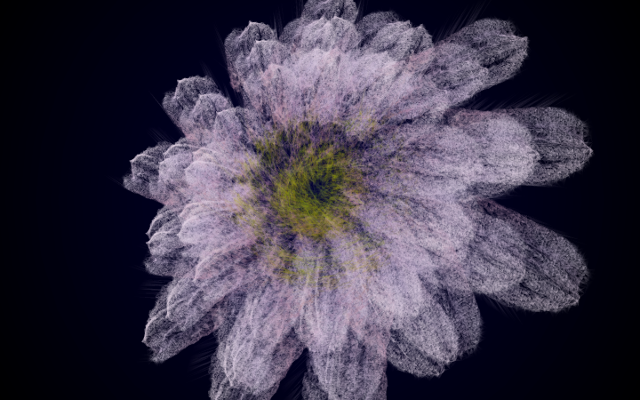Yawar Fiesta
produced by: Raphael Theolade
Introduction
Since 2014 we have been witnessing the reappearance of Virtual Reality (VR). The first head mounted display was created by the American computer scientist Ivan Sutherland in 1968, but only recently the technological progress has permitted the commercialisation of VR devices to a broader audience. Sutherland dreamt about an Ultimate Display, involving all the senses into the virtual experience, however, the technology as it exists today is mostly pertinent for the creation of space via audio and visual material. As art practice depends mostly on both these senses, this research will firstly investigate the role of the sight in the perception of space in the Western society and its influence on VR development, and will secondly address the re-emergence of the orality, therefore the hearing, in the contemporary culture, and how VR could beneficiate from it.
Finally, this short study will demonstrate why the creation of a VR set design for an acousmatic opera is relevant within the context of today’s computational art scene.
Visual Noise
Since the classical Greek era, sight is regarded as the noblest sense. Its specific power installed its hegemony in Western culture over the other senses. In her essay How We Became Post-Humans, Katherine Hayles also notes that sight, compare to other senses, is "sharp, focused and delineated". Among the scope of sensory organs that humans utilise to navigate within their perceptible space, initially, the eyes are sensors to avoid obstacles, permitting to explore, and hunt. This correlates with the notion of conquest not to mention that cartesian analysis had a major influence on the Western philosophy until today and therefore on the politics. The way the perceptible space is charted and mapped is relying almost exclusively on visual signs. It is difficult to think about space without picturing any image. In the chapter Space included in Phenomenology of Perception, Maurice Merleau-Ponty writes: …” Night is not an object before me; it enwraps me and infiltrates through all my senses, stifling my recollections and almost destroying my personal identity. I am no longer withdrawn into my perceptual look-out from which I watch the outlines of objects moving by at a distance. Night has no outlines"3. According to Merleau-Ponty the deprivation of sight is a loss of identity. In the darkness, the eye cannot assign objects to the distance anymore. The fixed shapes vanish, and only an uncertain changing realm is left to grasp. The brain cannot rely on established contours ready for analysis and on pictures to structure the emptiness. In the Eastern culture, in Japan, there is a concept to define the gaps in between objects: it’s called Ma. Drawing on Merleau-Ponty’s quote and his perception of darkness, one could say that the Ma is shifted from space to time in darkness. One’s unable to see, space would then be delimited by other sensory events in time, like sounds. In our phenomenological conception, we can affirm that sight specifically structures our approach of space, should we say in a rather static and fixed way, contrary to Time. Leaving touch and hearing as mere transitional steps towards the confirmation of thoughts emerging from visual perception.
Kanji characters – illustrated transposition
Furthermore, our perception of space and by means its production is also based on its reduction to Euclidian space. Until recently, space was defined by straight plans with only a finite number of possible dimensions. We have been using this mathematical conception for practical purposes but also for topographical mapping and technical projections.
Moreover, in the '70s, Marshall McLuhan proposed an explanation of the structure of the Western world by the distinguishing the main differences in between our alphabet and writing system from others in the rest of the world. Indeed, the West inherited from Greek and Roman alphabets which are the only ones based on meaningless phonemes relying therefore only on sight and depending entirely on their combination. Whereas in other morphemic alphabets such as Sanskrit or Mandarin, each character contains a single meaning. Each sign is a symbol carrying another phenomenon rather than standing as a visual abstract sign. The abstraction contained in this communication technology fundamentally structured the Western civilisation and anchored its philosophical tradition in the visual world for centuries.
From our phenomenological to our mathematical conception, including our alphabet, it would be interesting to evaluate and question how much functionality has overruled the Western civilisation and how it has served capitalism.
Indeed, the late VR production of virtual spaces cannot be disconnected from the capitalist industry which creates the mass market. Accordingly to marketing goals, VR experiences are developed to have a function either in the entertainment industry or in the technical industry. Today we see, along the traditional shooting video-games, the emergence of VR application for mine-workers safety training. In this context, it can be difficult to back Molly Gottschalk when she writes on Artsy that “…virtual reality is the most powerful artistic medium of our time”. Equally, certain views of VR’s potential future are debatable. For instance, Mark Pesce imagines VR could become the most important invention since writing thanks to its potential online development with webVR. Thus, people would be able to share experiences just as they are now sharing information via social media platforms. This was also Mark Zuckerberg’s idea when he bought the start-up Oculus Rift a few years ago. If by important invention Pesce means mass-utilisation and quintessence of commodification, he could be right…
“The spectacle is not a collection of images, but a social relation among people, mediated by images.” Guy Debord
In fact, this production of a new type of space, in today’s context implies specialization as described by Guy Debord. VR whole potentiality is restricted to its visual function which suits capitalism. The predominance of sight segments the homogeneous cosmic space into abstract fragments obtaining a heterogenous spatiality far from any global comprehension and spiritual or poetic experience. Therefore the strong domination of sight within the creation of any artistic VR experiences today is questionable.
Orality and Acousmatic
“Sight isolates, whereas sound incorporates” J.Paalsmaa
The technology of writing took humanity into the analytical world of sight. This invention permitted the description of space with the help of perspective and increased the growing separation between the perception of the self and the cosmic world.
Nevertheless, since the early 20th century, thanks to the electronic technology invention such as the radio, the television, and the tape recorder, Western society has been assisting to the resurgence of orality, called by Walter Ong as “secondary orality”.
The acoustician Pierre Schaeffer realized that many sounds we thought we were hearing were actually seen but also only explained by the context in which there were produced. By his research, he created a shift in Western music by proposing new instrumental forms without totally refuting tradition, but rather by disconnecting the strong link between sound and visual preconceptions. He created what is called Concrete Music.
Electronic Music/Musique concrete – Record cover
Acousmatic music was born within this context in the 50’s. The word acousmatic comes from the ancient Greek word Akousma which means "what we hear" and refers to Pythagorean disciples who for years listened to his lectures from behind a curtain, unable to see him.
The composing of acousmatic music means previously recorded sounds are shaped and modified with a computer, and through a tedious process of writing are finally edited into a musical composition. Opposed to the abstract production of sound in academic Western music, influenced by a manufactured musical instrument and a culturally determined harmony, here sounds are recorded from the concrete reality. By relieving itself from the grip of visual symbol, acousmatic listening frees the imagination and allows the presence to be central. Therefore, a whole space of suggestion and uniqueness can arise refuting imposition and globalisation.
The space emerging from the listener’s encounter with his interiority can be linked to the smooth space described by Gilles Deleuze and Felix Guattari in Thousand Plateaus. The smooth space, haptic and sonic, is a place of intensities, winds, noises, and pulsations, as opposed to the striated space defined by the relationship between multiple material instances. It is a place of resistance, counter-power, and independence, while the striated is a space of conformity and incorporation. Smooth spaces are the territory of folk and nomadic communities, where knowledge is transmitted verbally through poems, songs, and tells. These oral societies unfold in another temporality formed by verbal lore, embodied by the mechanism of voice, gestures, and memory. The complexity to govern these “unstriated” spaces with conventional domination methods have always marginalized these communities outside of the chartered territories. The writer and poet Kenneth White developed his theory of "Geopoetics" within this framework of uncharted spaces and nomadic intellectualism. He is interested in the speech of the landscape and the cosmological relation that exists between humans and the song composed by the geological topography of a given place. His radical thinking invites one to de-conditioned itself from its Western beliefs and to reconsider its mental mapping of the spaces that he/she inhabits. He encourages humans to reconnect with the whole by dwelling both physically and mentally regardless of determined borders, limits or measurements.
Yawar Fiesta – Lamento – Screenshot
Inheriting from similar holistic theories and poetics, in the 90’s, the first VR pioneers questioned with pertinence the hegemony of the visual over the sound and haptic worlds. Their various work and field of research prove that the full artistic potential of VR resides, as Jaron Lanier puts it, in its ability as a technology to highlights the existence of our subjective experience.
Indeed, Lanier explored the self-consciousness and almost ecstatic experience which can be reached with VR. Besides his work as a researcher, Lanier was also an ethnomusic and musical instruments enthusiast, passionate about improvisation.
On another note, Char Davies’s research draws on non-cartesian environments and on an invitation to kinesthetic contemplation, overcoming the superiority of stereoscopic visuality to offer the experience of self in an enveloping virtual world. In a paper about her work Osmose, she explained her intention “to demonstrates the [VR] potential to enable us to experience our place in the world afresh, or to paraphrase Gaston Bachelard, to change space in order to change our Nature.”
Brenda Laurel and Rachel Strickland worked extensively with words, sounds, and references to folk Canadian magical mythology in the piece Placeholder. The suggested possibility of sensory associations creates the virtual space that the users can experience.
Finally, Marcos Novak investigates non-Euclidian liquid architecture and the creation of space that can emerge from music.
Yawar Fiesta
Driven by references to nomadic and oral cultures as well as motivated by the range of possibilities offered by the creation of sensory spaces in VR, the artefact that will accompany this research project, is a proposition of a VR set design for an acousmatic opera, unveiling therefore the duality of the two phenomenological conception addressed in this essay.
Annette Vande Gorne is a Belgian composer. She studied concrete music composition at GRM (Groupe de Recherches Musicales) with Pierre Schaeffer and Guy Reibel in the 70’s. From 2006 to 2012, she composed the first acousmatic opera Yawar Fiesta. This musical piece is an opera inspired by the vocal polyphony and expressivity from the 17th century Baroque opera, as well as created in the acousmatic tradition, without a stage, singers and orchestra,. The opera genre gained popularity within catholic aristocracy as an apparatus to fight the Reformation. While being an instrument of power, it is also the beginning of the fuzziness between the frame of the artwork and the reality in the art history and the suppression of perspective and, opening to new possibilities of sensory expression.
Gihan Tubbeh – Yawar: The Absence of the Condor
Moreover, the visual excess in relation to a historical period of profound societal and politic changes resonates with our contemporary world.
The libretto written by the poet Werner Lambersy is based on the model of an Aeschylus ancient Greek tragedy. It describes a traditional corrida in the Peruvian Andes, which were celebrated the last days of July of each year, the Yawar Fiesta (Blood Feast). During the ceremony now forbidden, a condor, sacred Inca animal, symbol of the Andean world, were attached on the back of a Bull, symbol of the Spanish conquistadors as wells as the power on Earth, describing the duality between two metaphysical conceptions.
The duality present in the piece and its radicality resonates with the contemporary challenges of virtual reality, and with the ambiguities stated earlier in this essay.
Yawar Fiesta – Lamento – Screenshot
My artefact for this research will focus on one of Yawar Fiesta’s interlude, called Lamento. Chronologically situated at the end of the first act.
Lamento libretto text :
« Le cordon de nos fils et de nos filles
nous l'avons coupé avec nos dents
mais qui pour couper le cordon de misère ?
de l'urine, du sang et de la boue de nos ventres
nous les avons lavé avec amour
mais qui pour les laver du regard sur eux de l'or et de l'argent ? »
The poetic and metaphorical image contained in both text and music is the umbilical cord. During the Lamento the choir of women voices sings about the birth of their sons and daughters, how they cut off their umbilical cord themselves, imploring some help to now cut off the cord of poverty which bonds them to the world. I found pertinent to play with this specific visual pattern and to recreate this intertwining dance of streams and cords present both in the text and in Baroque art. The visual evokes also a snake, a recurring figure presents in shamanist ritual and the condor's feather. The general shape is composed of thousands of particles referring to Leibniz’ monads, components of the moving folds.
I chose to create a parallel between silences and the immersive dark immensity allowed by the VR headset. I intentionally played with the suggestion instead of showing a clean, bright environment. The shapes are appearing and disappearing into the darkness leaving an impression of uncertainty and allowing the imagination of a liquid architecture and various mental images. Visuals are only here to support the sound. The lighting is reacting to sound amplitude to play with the apprehension of space. When there is a silence in the music, the user is confronted with visual darkness and interiority. This playful relationship between emptiness and movement creates a respiratory dynamic which engages a sense of spatiality as well as listening awareness.
Conclusion
The challenge of using VR to experimentally rethink the opera form comes from the provocative and artistic desire to free this technology from its visual preconception, as well as exploring the computational capabilities of this medium to produce a spatial sensation.
The idea of focusing on using VR to create space rather than visuals could be a cultural tool resonating with the issues of our contemporary society. Any new territory is drawn and defined by the vision of its creator. The mainstream industry is currently ruling and designing the digital spaces seen in VR. The creation of an electroacoustic opera is an act of re-appropriation of our phenomenological world and act of protection of the interiority against the confusion created by image profusion, whereby Western capitalism expands. Thus it is meaningful today to consider the ambiguity of virtual reality to underline the ontological tension between its potential threatening agency and its equal strength as a tool to enact poetry, humanness, and spirituality since its mass-production is in progress. Historically every emerging technology had to face time for experimentation where scientists and artists attempted to reveal its most appropriate embedded language. Hence, as an alternative to visual brutality and by drawing on oral tradition, I am pursuing the goal of using VR as a tool of expression based on acousmatic music theories, in order to heighten one's sense of hearing and self-imagination.
Selected annotated bibliography :
- Pallasmaa, Juhani. The Eyes of the Skin: Architecture and the Senses. 3. ed, Wiley, 2012.
Juhani Pallasmaa is a Finnish architect and former professor of architecture at the Helsinki University of Technology. In this classic book, he addresses the question of sensory perception in the experience of architecture. He especially criticizes the inherited predominance of sight upon other senses in the first chapter. This phenomenological approach is an interesting resource for this research as VR is essentially based on the ability of the user to see a virtual world in stereoscopic CG. One of the problematic of this new medium is in fact oriented towards the challenge of recreating embodiment and haptic sensations. Moreover, the chapter about sound can be a guide to link space to inner sensations in opposition to sight which is directional and implies exterritoriality.
- Novak, Marcos, Liquid Architectures in Cyberspace. https://www.zakros.com/liquidarchitecture/liquidarchitecture.html. Accessed 30 Apr. 2019.
Marcos Novak is an architect, artist, composer, and theorist who designs virtual and hybrid intelligent environments. He defines himself as transarchitect and seeks to expand the definition of architecture by including electronic space. Novak is a professor at the Department of Architecture and Urban Design at UCLA, he is the founding director of the Laboratory for Immersive Virtual Environments and the Advanced Design Research Program at the School of Architecture at the University of Texas at Austin, and a Fellow of the World Technology Network. In this paper, he explains his concepts of Cyberspace within which the Liquid Architecture takes place. Cyberspace is a digital sensory world, allowing communication between users and potentially permitting communication with the real world. He describes it as an “embodied fiction”. (One of the possible and well-known cyberspace is the Internet. see Crossing by Stacey Spiegel and Rodney Hoinkes or Atlas of Cyberspace by Martin Dodge). Here Novak brings materiality to this speculative space, referring to poetry, music, and art. In this defined Cyberspace he rethinks the notion of architecture, free expectations of gravity, logic, and perspective. He calls this concept “Liquid Architecture”. With this new medium, he challenges the wonted status of architecture with animation and metamorphosis techniques. He incorporates temporality in the architectural structure as if it was a piece of music. Thus, this defined framework for spatial and time-based artistic expression widens the extent within which research about the conceptual representation of space could occur. It brings here a concrete starting point to undertake a postphenomenological study of the relation between these new types of topology linked to cosmological and cultural questions.
References
- Anderson, Elizabeth. “An Interview with Annette Vande Gorne, Part One.” Computer Music Journal, vol. 36, no. 1, Mar. 2012, pp. 10–22. Crossref, doi:10.1162/COMJ_a_00102.
- Bachelard, Gaston, and M. Jolas. The Poetics of Space. Beacon Press, 1994.
- Blesser, Barry, and Linda-Ruth Salter. Spaces Speak, Are You Listening? Experiencing Aural Architecture. MIT Press, 2007.
- Davies, Char. Immersence. http://www.immersence.com/. Accessed 30 Apr. 2019.
- Debord, Guy, and Ken Knabb. The Society of the Spectacle. Rebel Press, 2005.
- Deleuze, Gilles, and Félix Guattari. A Thousand Plateaus: Capitalism and Schizophrenia. Bloomsbury Academic, 2013.
- Deleuze, Gilles. Le pli: Leibniz et le Baroque. Editions de Minuit, 1988.
- Garnier, François. Diffusion spatiale et espaces numériques tridimensionnelles. Bibliothèque numérique Paris 8, https://octaviana.fr/document/165267623. Accessed 13 May. 2019.
- Gottschalk, Molly. Virtual Reality Is the Most Powerful Artistic Medium of Our Time - Artsy. https://www.artsy.net/article/artsy-editorial-virtual-reality-is-the-most-powerful-artistic-medium-of-our-time. Accessed 13 May 2019.
- Grau, Oliver. “Into the Belly of the Image: Historical Aspects of Virtual Reality.” Leonardo, vol. 32, no. 5, 1999, pp. 365–71. JSTOR.
- Hayles, Nancy Katherine. How We Became Posthuman: Virtual Bodies in Cybernetics, Literature, and Informatics. Univ. of Chicago Press, 2008.
- Ihde, Don. Listening and Voice: Phenomenologies of Sound. 2nd ed, State University of New York Press, 2007.
- Jones, Stephen. “Towards a Philosophy of Virtual Reality: Issues Implicit in ‘Consciousness Reframed.’” https://www.mitpressjournals.org/doi/10.1162/002409400552388, 13 Mar. 2006, doi:10.1162/002409400552388.
- Hall, Edward T. The Hidden Dimension. Anchor Books, 1990.
- Lanier, Jaron. Dawn of the New Everything: Encounters with Reality and Virtual Reality. Picador/Henry Holt and Company, 2018.
- Lefebvre, Henri. The Production of Space. Blackwell, 1991.
- McLuhan, Marshall. “Living in an Acoustic World.” Marshall McLuhan Speaks Special Collection, http://www.marshallmcluhanspeaks.com/lecture/1970-living-in-an-acoustic-world/. Accessed 13 May 2019.
- Merleau-Ponty, Maurice. Phenomenology of Perception: An Introduction. Routledge, 2002.
- Nithschke, Gunter. MA: Place, Space, Void | Kyoto Journal. https://kyotojournal.org/culture-arts/ma-place-space-void/. Accessed 13 May 2019.
- Ong, Walter J. Orality and Literacy: The Technologizing of the Word. Methuen, 1982.
- Ong, Walter J. This Side of Oral Culture and of Print :: Walter J. Ong Manuscript Collection Archives. http://cdm.slu.edu/cdm/ref/collection/ong/id/821. Accessed 10 Mar. 2019.
- Pesce, Mark. “Learning from History.” GHVR, 28 June 2016, https://medium.com/ghvr/tc-shanghai-2016-8ad6c097262d. Accessed 9 May. 2019
- Schaeffer, Pierre. Treatise on Musical Objects: Essays across Disciplines. University of California Press, 2017.
- Sterling, Bruce. “Augmented Reality: ‘The Ultimate Display’ by Ivan Sutherland, 1965.” Wired, Sept. 2009. www.wired.com, https://www.wired.com/2009/09/augmented-reality-the-ultimate-display-by-ivan-sutherland-1965/. Accessed 13 May. 2019.
- Strickland, Rachel. PLACEHOLDER (1993). 2011. Vimeo, https://vimeo.com/27344103.
- Tubbeh, Gihan. “Gihan Tubbeh.” GIHAN TUBBEH, http://gihantubbeh.com/. Accessed 13 May 2019.
- Vande Gorne, Annette. Yawar Fiesta. Empreintes DIGITALes. Electrocd .La Boutique Electroacoustique. https://electrocd.com/fr/album/5736/Annette_Vande_Gorne/Yawar_Fiesta. Accessed 26 Mar. 2019.
- White, Kenneth. L’esprit Nomade. Librairie Generale Franca, 2008.
- “Why You Must Learn Kanji.” Japan Today, https://japantoday.com/category/features/opinions/why-you-must-learn-kanji. Accessed 13 May 2019.
- Wollan, Gjermund. “Heidegger’s Philosophy of Space and Place.” Norsk Geografisk Tidsskrift - Norwegian Journal of Geography, vol. 57, no. 1, Jan. 2003, pp. 31–39. Crossref, doi:10.1080/00291950310000802.

